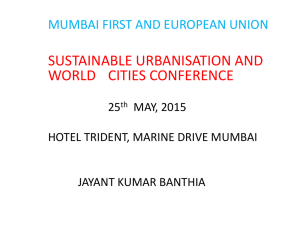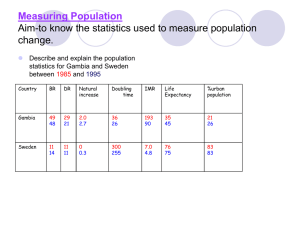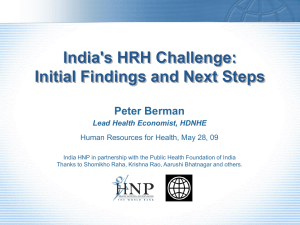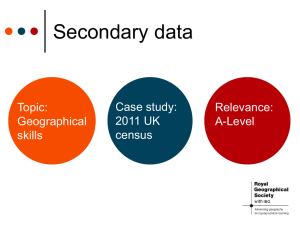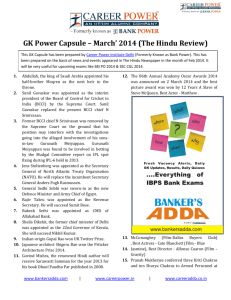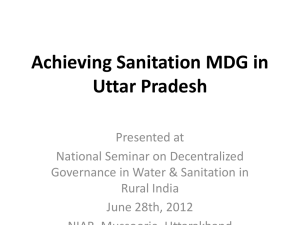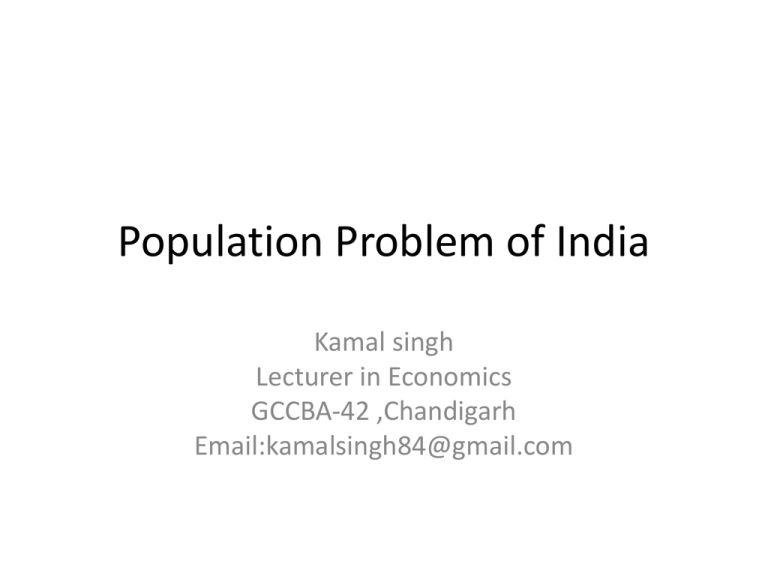
Population Problem of India
Kamal singh
Lecturer in Economics
GCCBA-42 ,Chandigarh
Email:kamalsingh84@gmail.com
• India is the second most populous country in the world,
with over 1.21 billion people (2011 census), more than a
sixth of the world's population. Already containing 17.5% of
the world's population, India is projected to be the world's
most populous country by 2025, surpassing China its
population exceeding 1.6 billion people by 2050.
• However, its population growth rate is only 1.41%, ranking
93rd in the world.
• India has more than 50% of its population below the age of
25 and more than 65% hovers below the age of 35. It is
expected that, in 2020, the average age of an Indian will be
29 years, compared to 37 for China and 48 for Japan; and,
by 2030, India's dependency ratio should be just over 0.4.
Causes of Population Explosion
• Difference between Birth Rate and death rate
• Difference between Immigrants and Emigrants
Birth Rate and Death Rate
• Birth Rate (or crude birth rate) The number of
live births per 1,000 population in a given
year.
• Death Rate (or crude death rate) The number
of deaths per 1,000 population in a given year.
Causes of High Rate
Causes for High Birth rate
Social causes
• Early marriage
• Illiteracy
• Religious and social attitude
• Economic causes
•
•
•
•
•
Poverty
Predominace of agriculture
Slow pace of urbanization
Lack of social security
Causes of Decline Death rate
•
•
•
•
•
•
Control over epidemics
Increase Urbansiation
More medical facilities
Late marriage
Facility of maternity home
Decline in Social evils
Remedies for population Explosion
Economic
• Modernization of Agriculture so that it become technical intensive rather than
labour intensive
• Industrial development
• Urbanisation and more employment
• Poverty alleviation
Social
• Spread of education particularly female education as we have before us the
experience of Kerala and Tamil Nadu.
• Increase in female wage employment: Female education and their gainful
employment will raise the status of women which will have positive effect on
achieving small family norm.
• Provision of old age pension and social security which will reduce the dependence
of parents on their children.
• Reduction in infant mortality i.e., death rate of infants and small children through
expanded public health programmes and better nutritional standards by ensuring
longevity of life for new born children will help in reducing birth rate.
• Family planning
• Incentives for small families
National Population Policy, 2000
Objectives of National Population Policy
• The immediate objective of the NPP 2000 is to address the
unmet needs for contraception health care infrastructure
and health personnel, and to provide integrated service
delivery for basic reproductive and child health care. The
medium-term objective is to bring the TER to replacement
levels by 2010. The long-term objective is to achieve a s
population by 2045, at a level consistent with the
requirements of sustainable economic growth, social
development aid environmental protection.
• In pursuance of these objectives, the following National
Socio Demographic Goals lobe achieved in each ease by
2010 are formulated:
Highlights of the 2011 Indian Census
• The provisional figures of Census 2011 were released in
New Delhi on March 31, 2011.
• The population of the country as per the provisional figures
of Census 2011 is 1210.19 million of which 623.72 million
(51.54%) are males and 586.46 million (48.46%) are
females.
• The population of India has increased by more than 181
million during the decade 2001-2011
• Percentage growth in 2001-2011 is 17.64; males 17.19 and
females 18.12.
• 2001-2011 is the first decade (with the exception of 19111921) which has actually added lesser population
compared to the previous decade.
• Uttar Pradesh is the most populous State (199.5 million) in
the country followed by Maharashtra with 112 million.
• The percentage decadal growth rates of the six most
populous States have declined during 2001-2011 compared
to 1991-2001:
• Uttar Pradesh (25.85% to 20.09%)
• Maharashtra (22.73% to 15.99%)
• Bihar (28.62% to 25.07%)
• West Bengal (17.77 % to 13.93%)
• Andhra Pradesh (14.59% to 11.10%)
• Madhya Pradesh (24.26% to 20.30%)
• During 2001-2011, as many as 25 States/Union Territories with a
share of about 85% of the country’s population registered an
annual growth rate of less than 2% as compared to, 15 States/Union
Territories with a share of about 42% during the period 1991-2001.
• 15 States/Union Territories have grown by less than 1.5 per cent per
annum during 2001-2011, while the number of such States/Union
Territories was only 4 during the previous decade.
• The total number of children in the age-group 0-6 is 158.8 million (5 million since 2001)
• Twenty States and Union Territories now have over one million
children in the age group 0-6 years. On the other extreme, there are
five States and Union Territories in the country that are yet to reach
the one hundred thousand mark.
• Uttar Pradesh (29.7 million), Bihar (18.6 million), Maharashtra (12.8
million), Madhya Pradesh (10.5 million) and Rajasthan (10.5 million)
constitute 52% children in the age group of 0-6 years.
• Population (0-6 years) 2001-2011 registered minus (-)3.08 percent growth
with minus (-)2.42 for males and –3.80 for females.
• The proportion of Child Population in the age group of 0-6 years to total
population is 13.1 percent while the corresponding figure in 2001 was
15.9 percent. The decline has been to the extent of 2.8 points.
• Overall sex ratio at the national level has increased by 7 points to reach
940 at Census 2011 as against 933 in Census 2001. This is the highest sex
ratio recorded since Census 1971 and a shade lower than 1961. Increase in
sex ratio is observed in 29 States/UTs.
• Three major States (Jammu & Kashmir, Bihar & Gujarat) have shown
decline in sex ratio as compared to Census 2001.
• Kerala with 1084 has the highest sex ratio followed by Puducherry with
1038, Daman & Diu has the lowest sex ratio of 618.
• Child sex ratio (0-6 years) is 914. Increasing trend in the child sex
ratio (0-6) seen in Punjab, Haryana, Himachal Pradesh, Gujarat,
Tamil Nadu, Mizoram and A&N Islands. In all remaining 27
States/UTs, the child sex ratio show decline over Census 2001.
• Mizoram has the highest child sex ratio (0-6 years) of 971 followed
by Meghalaya with 970. Haryana is at the bottom with ratio of 830
followed by Punjab with 846.
• Literacy rate has gone up from 64.83 per cent in 2001 to 74.04 per
cent in 2011 showing an increase of 9.21 percentage points.
• Percentage growth in literacy during 2001-2011 is 38.82; males :
31.98% & females : 49.10%.
• Literates constitute 74 per cent of the total population aged seven
and above and illiterates form 26 per cent.

